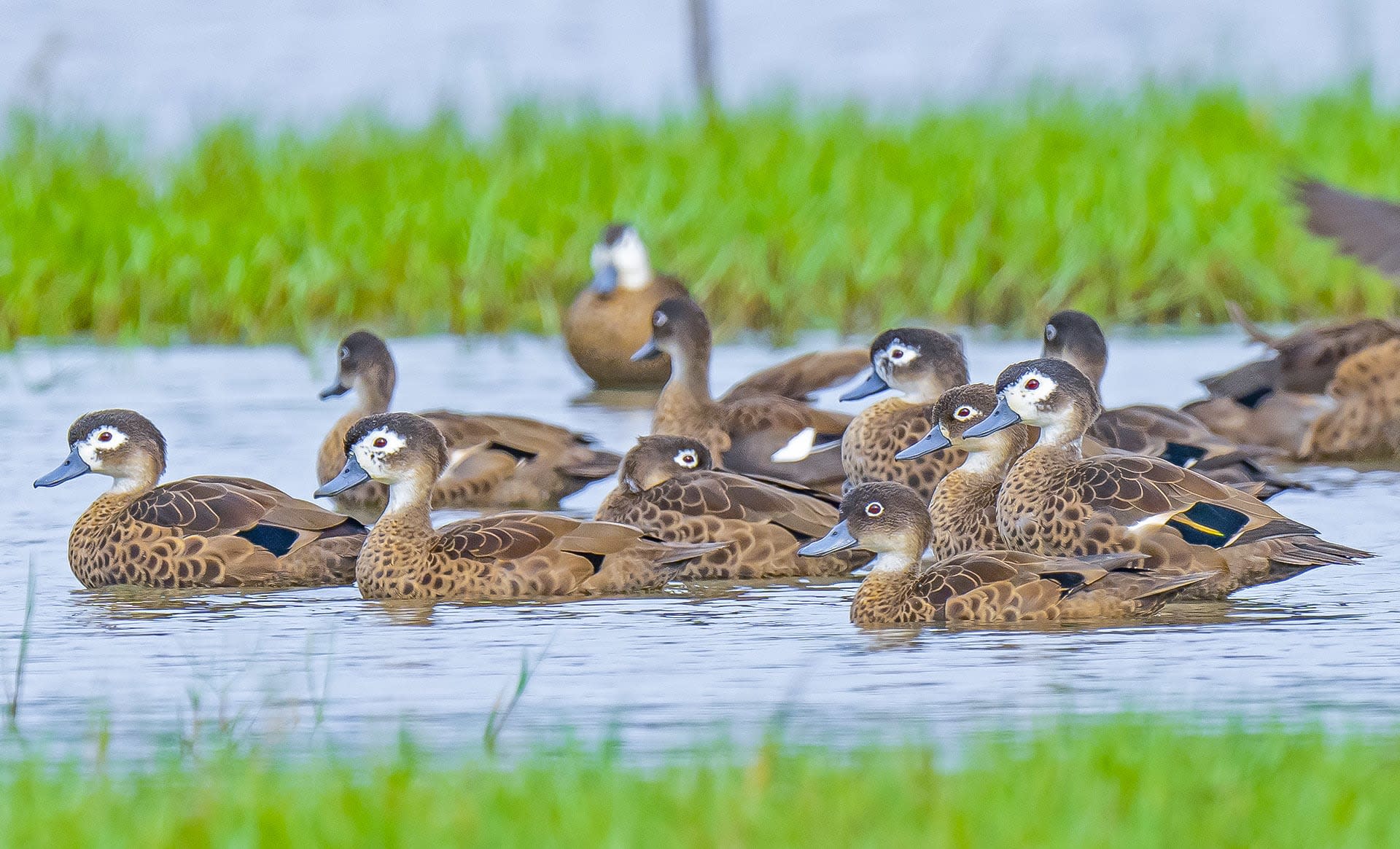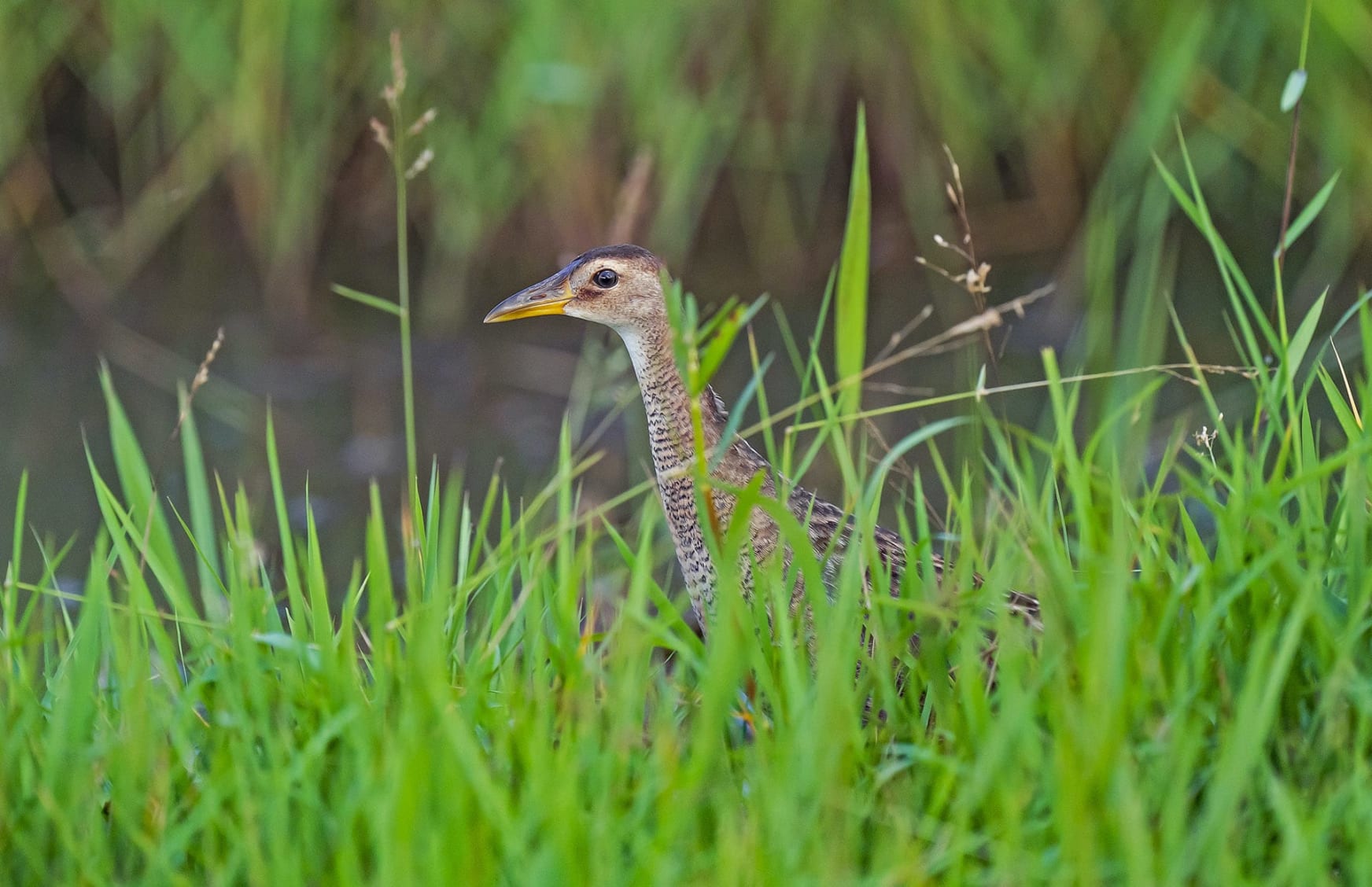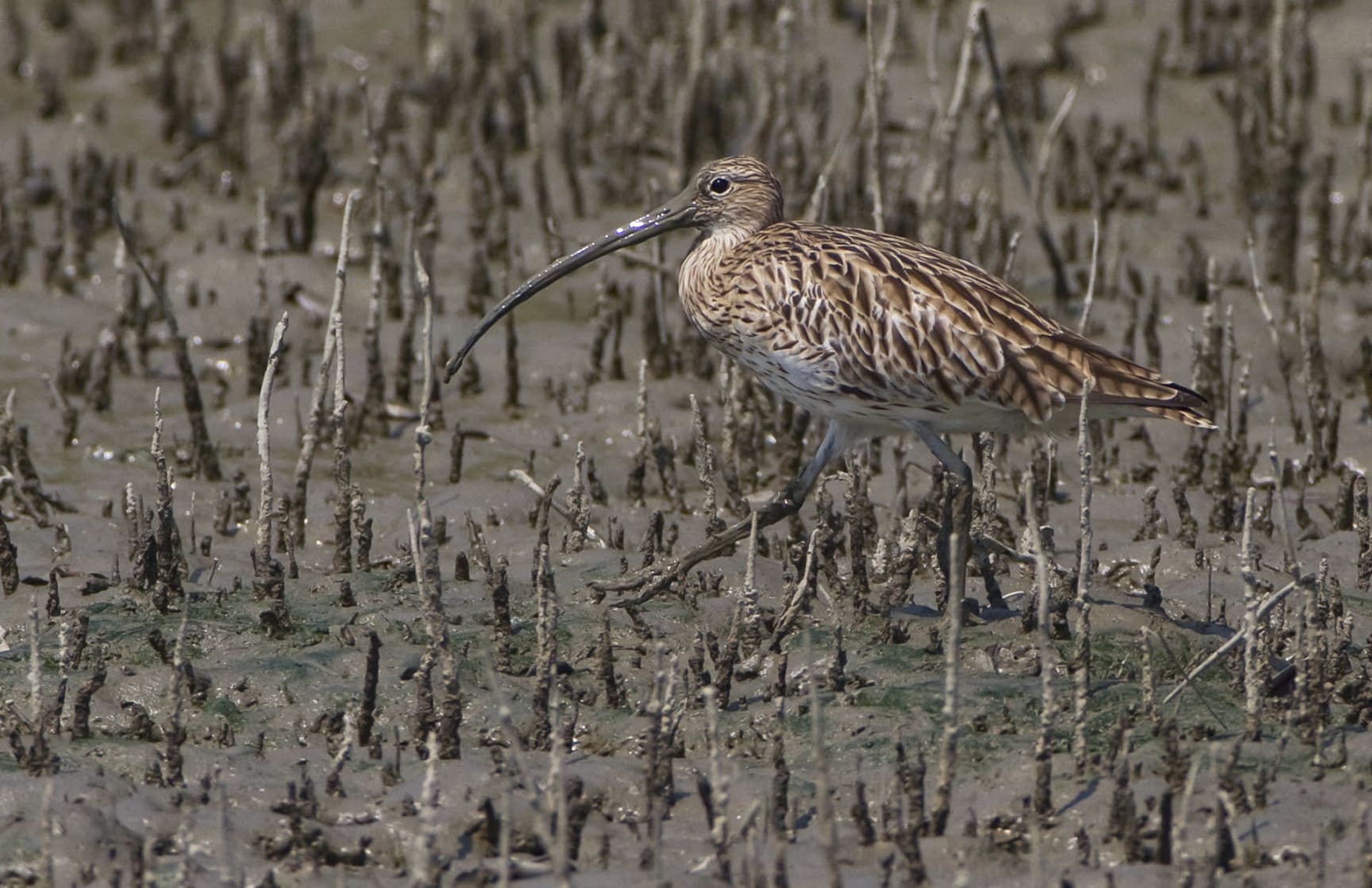 Listen to this article
•
15:34 min
Listen to this article
•
15:34 min
At the crack of dawn, our bird guide Vikram Shil leads us to Sippighat, a wetland about four kilometres from Port Blair, capital of the Andaman and Nicobar Islands. Flanked by a pockmarked Andaman Trunk Road on one side and a tiny hillock on the other, Sippighat looks ordinary at best. But Shil’s excitement is contagious. He points to a large flock of wildfowl bobbing in the waters. I see a few cinnamon-coloured lesser-whistling ducks, heads firmly tucked into their bodies, catching some shut-eye despite a rising sun. A proud purple swamphen gingerly tiptoes around the grasses and reeds, occasionally sticking its blood-red beak into the weeds to pluck a meal. “Look carefully,” says Shil pointing at the heart of a large mixed flock of murmuring waterfowl. “That’s our visiting celebrity — the Andaman teal.”
We train our lenses on a small brown bird with an ivory-white ring around its blood-red eyes. One has an unmistakable large white patch around its eye that sets it apart from the rest. “It’s a male,” says Shil. I spend several minutes calmly watching it hobnob with other ducks. The Andaman teal (Anas albogularis) is an endemic wildfowl, i.e., it is found only in the Andamans and the Coco islands (Myanmar). Earlier, the Andaman teal and Sunda teal (Anas gibberifrons) were considered subspecies of the grey teal (Anas gracalis), but recent genetic studies show that all three are distinct species. The Andaman teal is nomadic, and during summers, when the waters of Sippighat wetland turns shallow, it shows up to feed in the marshy mudflats. But this was not always the case. In fact, the wetland as we see it today did not exist until two decades ago.

Sippighat was once a lush green expanse of privately owned paddy fields, surrounded by the homes of those who depended on the farms. At one end, a mangrove forest stood guard against the frequent storms on the island’s coasts. On another end, a small hillock watched over the fields. However, in 2004, a deadly tsunami slammed into the coast on the morning after Christmas. The tectonic activity that threw up gargantuan waves was so severe that the entire archipelago tilted under its force. The northern islands stuck out of the waters, exposing the sea bed and sensitive corals, killing them instantly. The southern ends went significantly under — up to a metre at the southern end — inviting sea waters inland. On South Andaman Island, several areas remained inundated for months, but in a few, the water never left. The original owners of the land were moved out and compensated for the loss. Sippighat is one of the many tsunami-created wetlands. Seventeen years later, a few bare concrete columns with rusting iron scaffolding stick out to form a frame of what must’ve once been the window of a lively home — a painful reminder of how the tragedy ravaged the island. A satellite survey indicates that South Andaman Island alone has at least 43 such wetlands. Most are located near mangrove swamps in coastal regions, where incoming tides and freshwater streams routinely feed them.
For the first year, post-tsunami, these inundated wetlands were hostile spaces given the extreme salinity. But nature is resilient. Healthy microbes stabilised the salinity in the waters. Wetland reeds and ferns, which provide nesting spaces for wetland birds and plentiful food, followed. Mangrove species grew around the edges. Wetland birds — resident and migratory — soon showed up in this regenerating habitat. “In 2006, I saw the Andaman teal for the first time in South Andaman,” says Shil, a Port Blair resident and a bird guide for the last 20 years. “I couldn’t believe my eyes. I had been taking birders all the way to Little Andaman (another island accessible by a ferry) to spot the bird for years. And now here it was, four kilometres from my home!” The Andaman teal’s population is estimated to be 500-1,000 individuals. It is listed as “Vulnerable” under the IUCN Red List of threatened species. The news of its presence spread. Given the wetland’s proximity to the main city, the habitat attracted birders and researchers in search of rare sightings, and the wetland soon became a popular site, much to Shil’s joy.

But Sippighat is unique for other reasons too. Since the 1.14 sq km wetland is a mosaic of several microhabitats — marshy mudflats, grassy wetlands, and open waters — it provides a secure abode for a wide range of species. Today, as many as 57 bird species — 21 migratory and 16 resident — have been recorded here. Apart from the Andaman teal, it also hosts another endemic species, the Andaman crake, a shy bird that skulks in the wetland’s tall reeds. We catch a fleeting glimpse of its rust-coloured body and black-and-white underparts before it dives into the weeds sending shutterbugs around me in a frenzy. We follow its movement through the rustling grasses, but it doesn’t show itself. All we get is a tease. The wetland is also home to two other near-threatened species — the Eurasian curlew that has a strikingly long, downward curved bill, and the bar-tailed godwit, with an equally long bill that curves slightly upwards. In 2010, the forest department placed a board naming the most popular birds seen in the wetland.
Rajan Pilakandy spent five years from 2008-2012 doing his PhD on the birds in the Andaman Islands. The wetlands the tsunami created hold a special attraction for him. He studied four large wetlands — Hutbay, Ograbrang, Sippighat, and Stewart Gunj — across South and Little Andamans, arguing that these new habitats host a healthy population of birds and are in need of conservation. “The 2004 tsunami offers a unique opportunity for a long-term study to understand how a natural event which drastically changed the topography of these coastal sites, and over time, how birds and other wildlife adapt to such changes,” he writes in one of his papers. As global climate change intensifies, he says, with its predictions of rising coastal sea levels, wetlands like Sippighat may not be an anomaly. How do we treat these wetlands that were born out of a disaster and have claimed private land? Who do they belong to? How do we conserve them? Effective research and conservation of Sippighat could hold answers to these questions.
Unfortunately, Sippighat is reeling under new pressures. The Andaman and Nicobar Islands are seeing a surge in tourism. Land around the main cities has turned extremely valuable. As the sun rises, the murmur of waterfowl is drowned by the sound of traffic speeding past Sippighat. The hillock adjacent to the wetland roars with mining and construction activity. Legally, Sippighat still sits on part-private and part-revenue land. Former owners, unhappy with the compensation, have returned to claim their farms. Several parts of the wetland, Shil tells me, have already been reclaimed. On one part of it, sits a petrol pump.
Wetlands like Sippighat are one of many post-tsunami habitats on the islands, stuck in liminality, with no clear legal or protection status. While they are crucial for the regeneration of a once-battered ecosystem, their future remains uncertain.










